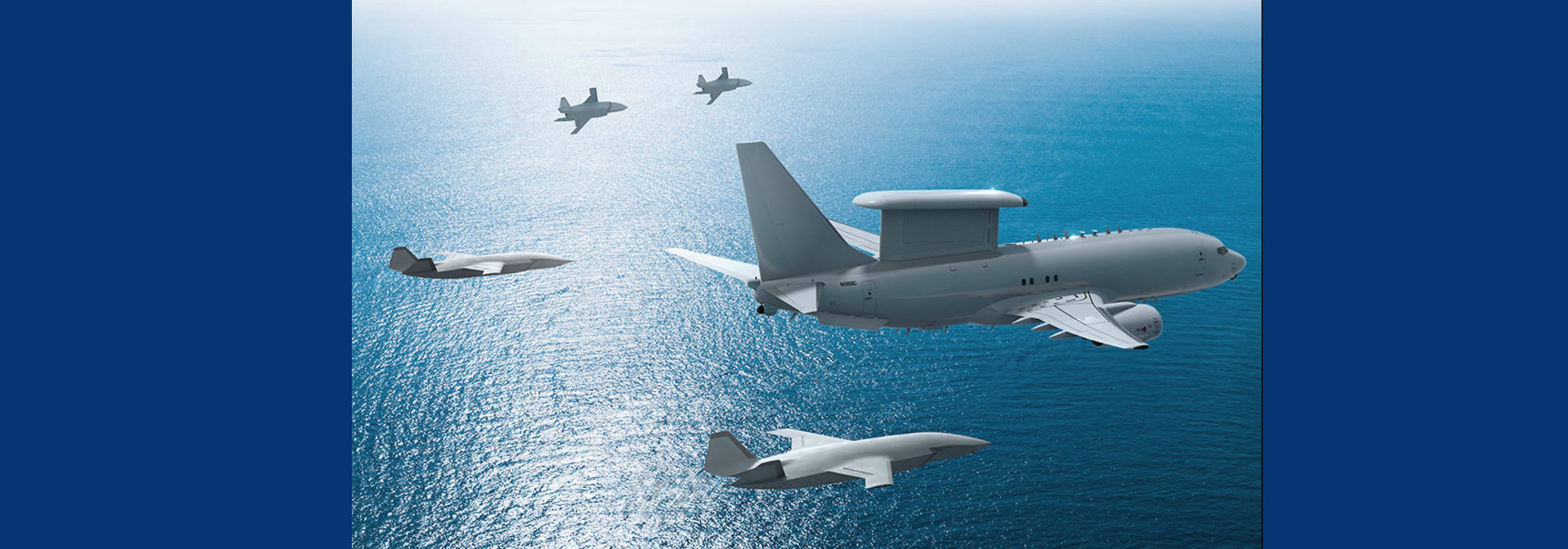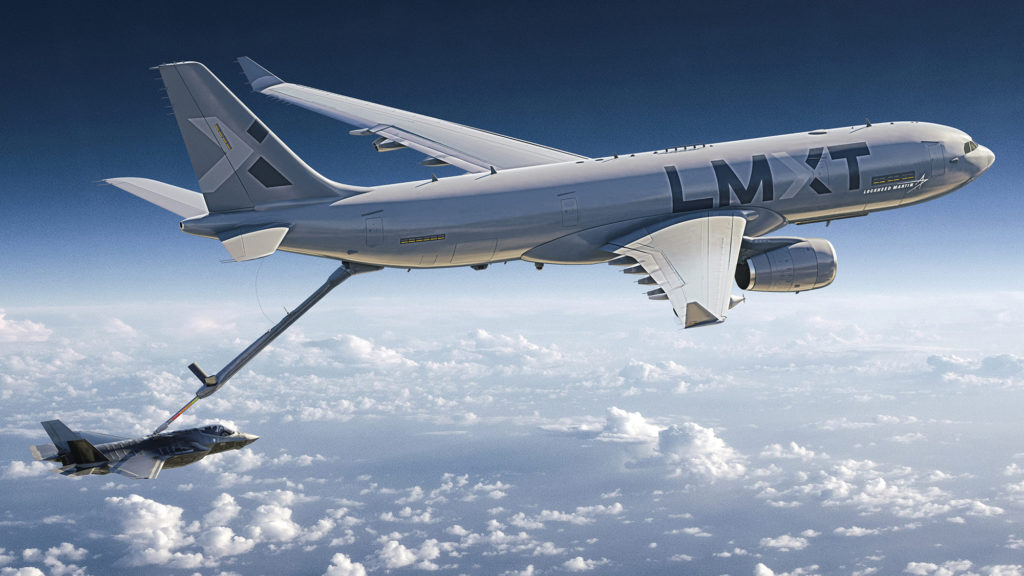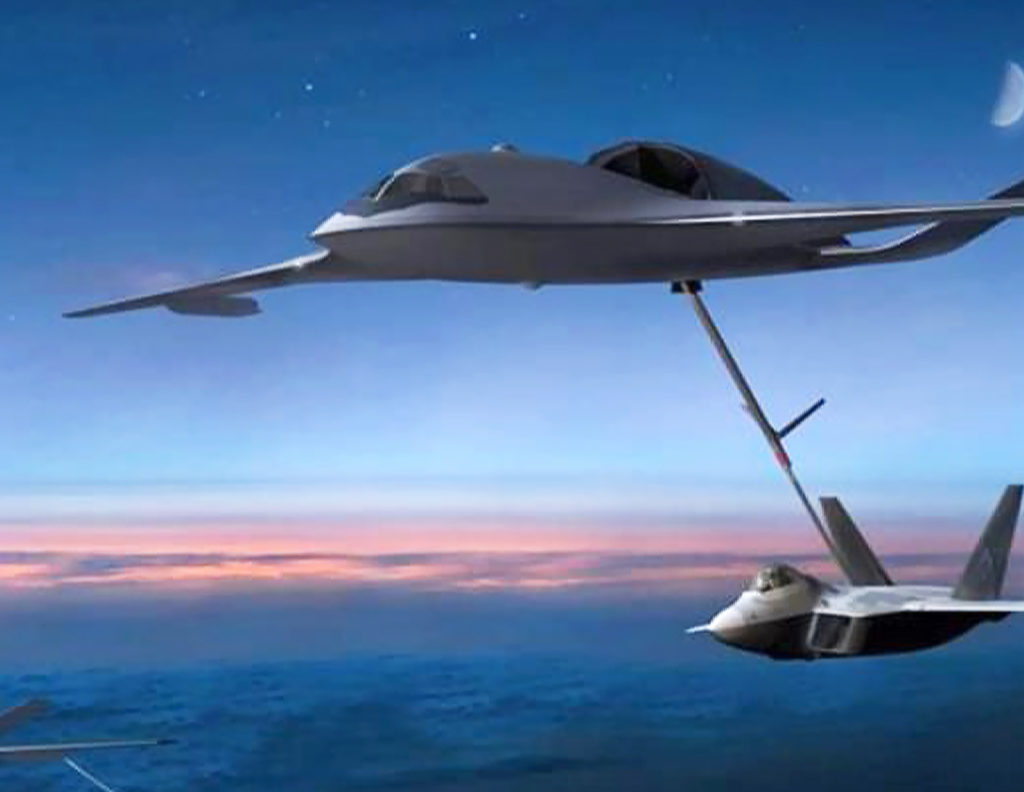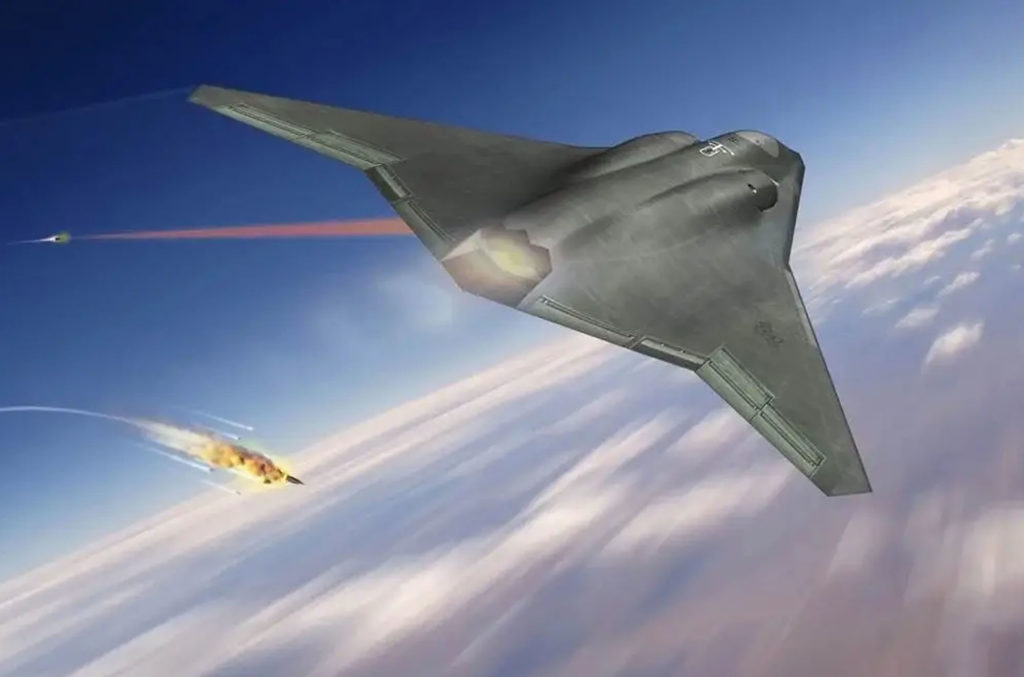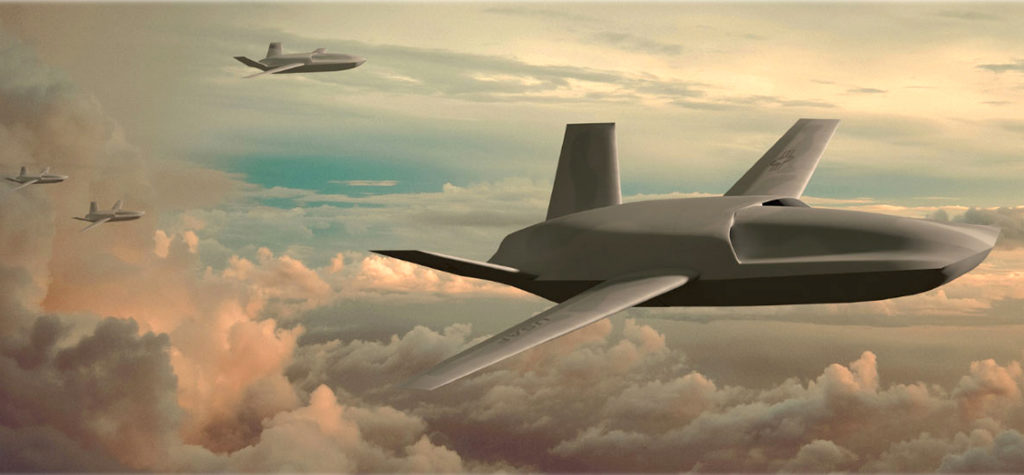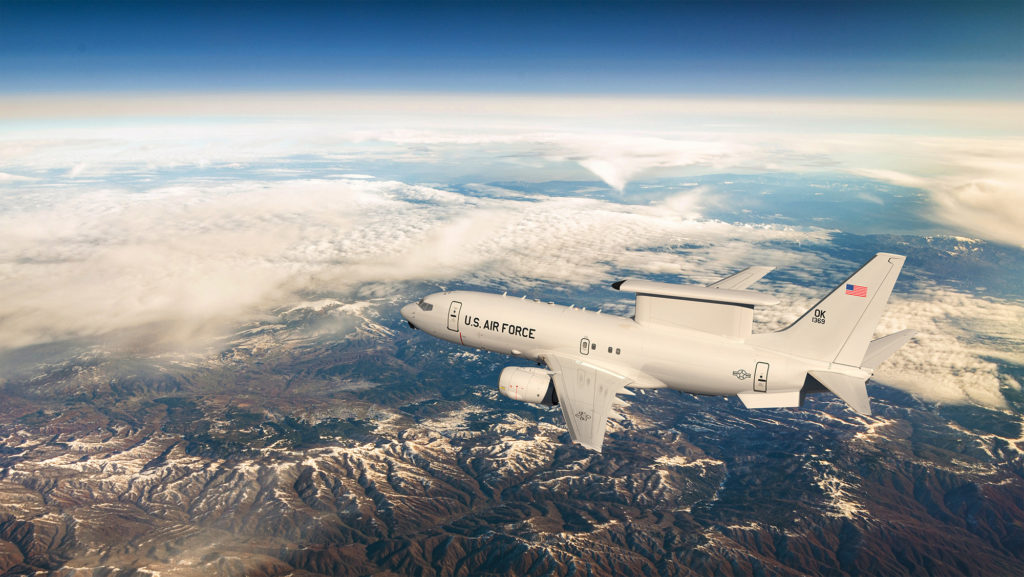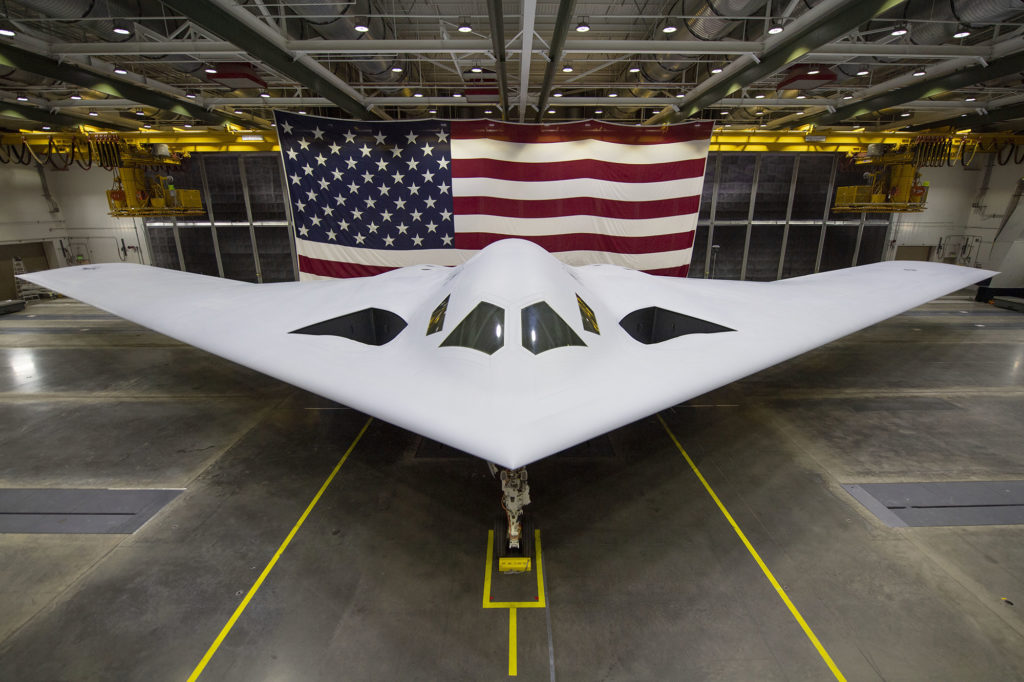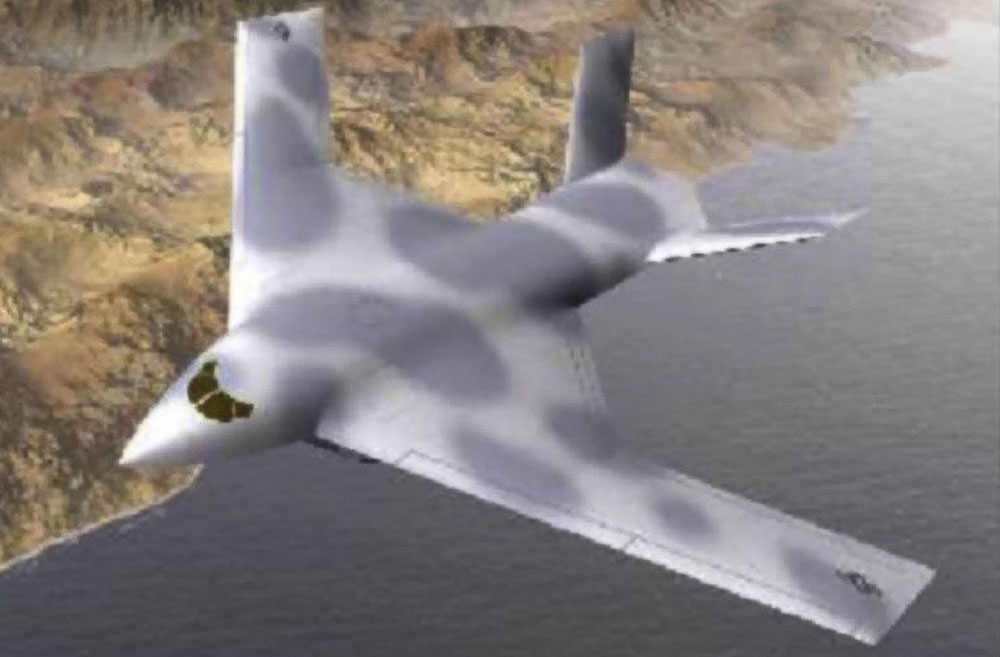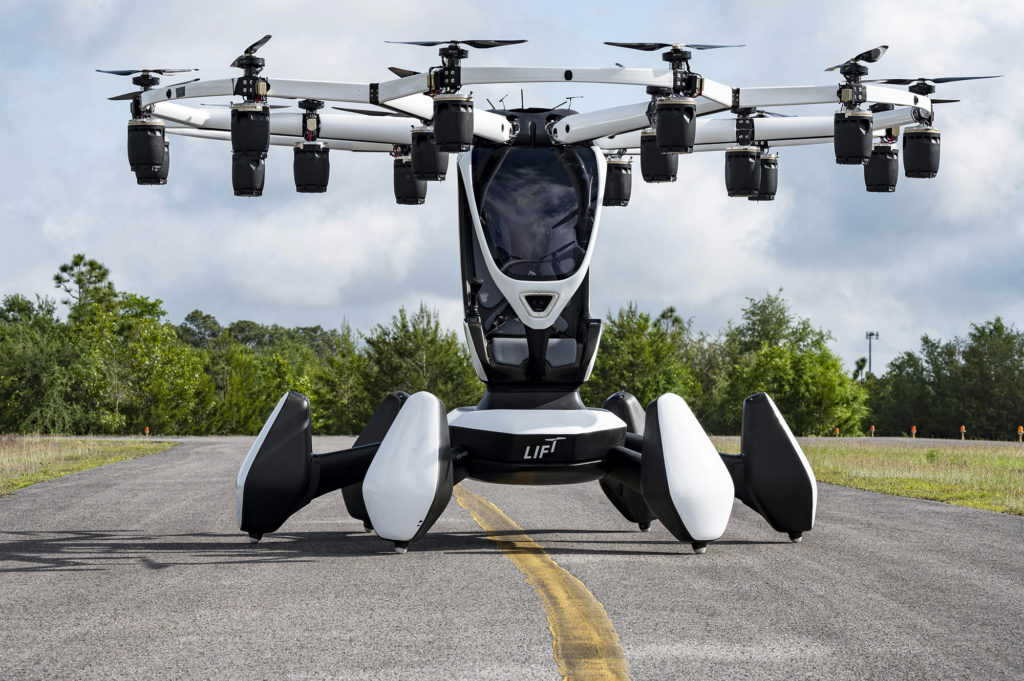13 programs that offer a glimpse at what the Air Force’s drive to modernize could yield.
After a prolonged period of anemic aircraft recapitalization, the Air Force is launching a robust and fast-paced program of modernization. At least 20 new airplane programs—including a handful that are variants—are in some stage of planning or development. If sustained, this airplane-building campaign will lower the average age of the fleet, increase its size, and enhance its ability to be upgraded rapidly. But with so many new efforts underway, and the never-ending competition from funding “fight tonight” readiness and force structure demands, trade-offs and choices will have to be made.
For this summary, we have listed only programs that have been announced by Air Force leaders, or which have appeared in budget documents, been announced through industry solicitations, or otherwise disclosed through open sources. Programs already in series production—such as the F-35 and T-7A trainer—are not included. This list is not comprehensive, as many programs have changed names or concept, may have been submerged in a new level of classification, or may not have been revealed publicly. Not all of these programs are likely to make it into production.
Mobility Aircraft
The Air Force has dropped its decade-long, three-phase plan to recapitalize its KC-135 and KC-10 tanker fleets: known as the KC-X, Y, and Z. The KC-X, meant to recapitalize much of the KC-135 fleet, became the KC-46, and is delivering 179 aircraft through 2029. Its follow-on, the KC-Y, was to have been a 150-airplane program to complete replacement of the KC-135 and the KC-10. However, the Air Force has trimmed that phase to 75 “traditional” tankers—modified commercial airliners or cargo jets—and moved on to a stealthy, survivable future tanker known as the Next-Generation Air refueling System (or NGAS, see below) in the third phase. Although no longer called the “bridge tanker,” the Advanced Aerial Refueling Family of Systems is essentially that. The service will decide mid-2024 whether to hold a competition for the interim tanker or simply award Boeing a sole-source contract for more KC-46s with some additional communications and possibly command and control capability. Some members of Congress, unhappy with Boeing’s KC-46 performance, will push for a new competition. Lockheed Martin has put forward its larger LMXT tanker based on the Airbus A330 Mult-Role Tanker Transport (MRTT) for the bridge tanker.
Program: Next-Generation Air-Refueling System (NGAS, formerly KC-Z)
Target Service Date: 2040
User: Air Mobility Command
Air Mobility Command needs a stealthy tanker able to survive in contested airspace, in order to expand the fleet’s range and allow other aircraft to operate closer to well-defended targets. Air Force Secretary Frank Kendall has said USAF can no longer simply convert civilian airliners or freighters for tanking duty, but must have purpose-built aircraft that put a “high premium on survivability.” The Air Force asked industry for NGAS information in a Jan. 31, 2023, announcement, saying it’s open to a wide variety of operational concepts and aircraft designs, but the Air Force and the Defense Innovation Unit are already studying blended wing body (BWB) concepts, able to achieve at least a 30 percent efficiency improvement over the existing KC-135/KC-10 fleet. An NGAS Analysis of Alternatives will get underway in October. Formerly the “KC-Z” phase of a three-stage tanker recapitalization effort, the program is now known as “increment three.” USAF will entertain any ideas that can reach a Technology Readiness Level of 6—ready for a prototype—by 2032.
Program: C-X Strategic Transport
Target Service Date: 2045+
User: Air Mobility Command
The C-5 Galaxy received a major upgrade in the 2010s, which should extend its life into the 2040s, but the C-17 has not yet had a service life extension program (SLEP). Even if it does, the Air Force believes that more survivable aircraft, able to operate from areas without a large runway—perhaps without any runway—are its future. The “C-X” is a placeholder for a future strategic transport to succeed the C-5 and the C-17, likely having stealth and globe-girdling ranges, but the requirements are still being hashed out and will depend on many other choices made in the interim. With new tankers the focus in the near-term, and a reasonably healthy fleet of strategic lifters in hand—the C-17 fleet averages just 14.1 years old—the Air Force has time to decide what it really needs in a follow-on heavy lifter. Kendall has established a “cross-cutting capability task force” for airlift and tanking charged with developing a comprehensive mobility roadmap that meshes with his “operational imperatives.”
Tactical Combat Aviation
The Air Force describes the highly classified NGAD as not a single, crewed fighter but a family of platforms intended to collectively gain air superiority at a time and place “of our choosing.” The NGAD is needed because adversary aircraft, particularly those of China, are gaining in stealth and have long-range air-to-air missiles, driving USAF to seek a new fighter-like capability an order of magnitude stealthier than the F-22. Meant to succeed the F-22 circa 2030, the NGAD will comprise one crewed airplane and up to five Collaborative Combat Aircraft that will act as its wingmen and protect it from air, electronic/cyber, and surface threats. The Air Force will have invested more than $9 billion in NGAD by 2025. Former USAF acquisition executive Will Roper in 2020 revealed that an NGAD “full-scale demonstrator” prototype had already flown and “broken a lot of records,” although he did not say whether those had to do with physical performance or speed of prototyping. Further, Roper’s vision was for a fresh NGAD design to become operational every five years, to keep up with rapidly advancing technology. Roper’s vision called for 50 to100 NGADs that would be flown up to 15 years, then either moderately updated, retired or used in one-way missions, eliminating long-term sustainment costs. The NGAD is not meant to replace the F-22 on a one-for-one basis. At least one variant of NGAD will have sufficient range to operate in the Pacific with far less tanker support than today’s fighters. While the Air Force and Navy are comparing notes on NGAD technologies and seeking some commonalities, they are not pursuing a joint program. Kendall has mentioned a “notional” inventory of 200 NGADs, but has not offered a definitive fleet size.
The Air Force envisions Collaborative Combat Aircraft (CCA) as uncrewed, autonomous escorts for crewed airplanes, with an ultimate ratio as high as five CCAs to each fighter or bomber. They will perform missions such as Suppression/Destruction of Enemy Air Defenses (SEAD); intelligence, surveillance, reconnaissance (ISR); Electronic Attack/Electronic Warfare (EA/EW), secure communications, and potentially as battle management nodes, and provide “affordable mass” for the combat air forces. Air Combat Command requirements chief Maj. Gen. R. Scott Jobe said in March 2023 that it’s a “misconception” that CCAs will be “attritable,” saying they are meant to be capable platforms that will have years of service, though some will not be “unpacked” until they’re needed for combat. Kendall said in March he has tasked staff to examine how a 1,000-CCA force—with two each to accompany 200 NGADs and 300 F-35s—would be equipped, and how ACC would be organized to operate them. Kendall described the CCAs as analogous to flying, independent versions of the pods fighters carry for sensing and targeting, and wants them at a “fraction” to “half” of the price of the F-35, which costs about $80 million each. Early versions are likely to be used as stealthy threat simulators in live-fly wargames. The service expects that a majority of CCAs will be of modular design, with payloads or even whole sections of the aircraft able to be changed out to fit required missions.
Program: Penetrating Electronic Attack (PEA) aircraft
Target Service Date: 2030-2032
User: Air Combat Command
In the mid-2010s, the Air Force was working on two aircraft meant to carry the air-superiority fight inside contested enemy air defense zones: the Penetrating Combat Aircraft (PCA) and Penetrating Electronic Attack (PEA) aircraft. The PEA was described as a “stand-in jammer,” replacing and expanding on capabilities lost when the Navy/Marine Corps retired the EA-6B Prowler and curtailed their EA-18 Growler program, on which the Air Force relied. Former Air Combat Command chief retired Gen. Herbert J. Carlisle said in 2017 that he though the PEA would beat the PCA into service, as the need for it is greater, given China’s heavy investment in spectrum warfare. He also said the PEA was likely to be “autonomous” or “semi-autonomous.” While the PCA is likely to have evolved into the crewed centerpiece of the NGAD program, the PEA may now be one of the CCA platforms in the NGAD family. ACC Commander Gen. Mark Kelly said in March that electronic warfare is the No. 1 function needed of CCAs.
Program: MR-F or MR-X
Target Service Date: Mid-2030s
User: Air Combat Command
When the Air Force’s F-16s reach the end of their already-extended service lives, circa 2035, the service will need a successor: a relatively low-cost aircraft able to act as a force-builder, as well as an aircraft the U.S. can use to partner with countries lacking the funds or sophistication to operate a high-end combat aircraft fleet. Chief of Staff Gen. Charles Q. Brown Jr. has described this aircraft, known in USAF planning documents as “MR-F” or “MR-X,” as a “fifth-gen-minus” aircraft, meaning it has more survivability than a fourth-generation F-16 but somewhat less complexity and cost than a fifth-generation F-35. First revealed in 2021 in tactical aviation planning documents, the MR-F/MR-X is not yet a program of record, and Air Combat Command has not signed out a requirement for it. Air Force Program Executive Officer for fighters and advanced aircraft, Brig. Gen. Dale White, said in August 2022 that “the MR-F piece is going to continue to be looked at, because at some point we’ll have to have a replacement” for the F-16. One potential option for MR-F/MR-X is a weaponized T-7A RedHawk trainer, built by Boeing, which could be fitted with hardpoints and sensors to provide a low-cost, easily maintained light strike and air defense capability.
Intelligence, Surveillance, Reconnaissance
With USAF’s E-3 AWACS fleet mission capable only half the time—mainly due to obsolescing systems and a nearly-extinct 707 parts pipeline—the service moved in late winter to acquire the E-7A Wedgetail, an AWACS built by Boeing (originally for Australia) that has now been adopted by a number of U.S. allies. The E-7 is already in production, and the investments made in it by allies can be leveraged by the Air Force. After preliminary studies last fall, in March USAF awarded Boeing a $1.2 billion contract to get underway and build two prototypes starting in 2025, which should be available for operational use in 2027. A total of 26 E-7s is planned, with the last one delivered circa 2032. Beyond that, the Air Force expects to conduct the future Air Moving Target Indicator mission with space-based assets. The E-7 will also have a Battle Management, Command and Control mission. It will be inherently interoperable with the air forces of allies who have already bought it, but USAF will be adding its own unique capabilities. The E-3 will be retained and upgraded until the E-7 can take the mission over.
Program: RQ-180
Target Service Date: Imminent or Already Operational
User: Air Combat Command
The Air Force’s gradual phase-out of the RQ-4 Global Hawk and U-2 Dragon Lady with no apparent successor suggests a classified program is well in hand. While satellites have tremendous ISR capability, they lack the flexibility for quick repositioning to observe fast-developing events. The existence of the RQ-180—said to be a high-altitude, stealthy flying wing for penetrating intelligence, surveillance and reconnaissance work—is something of an open secret, but the Air Force has not officially revealed the aircraft. Budget documents, comments from senior USAF leaders and unexplained classified work with Northrop Grumman points to the RQ-180 as a possible technological pathfinder for the B-21 Raider, both programmatically and as part of “family of systems” that helps the bomber prosecute its targets. Northrop had a seven-year relationship with the Air Force’s Rapid Capabilities Office before the B-21 contract was awarded, and this work likely focused on the RQ-180.
Long-Range Strike
The B-21 program is expected to produce “usable assets” in the mid-2020s, and become the backbone of USAF’s bomber force in the early 2030s, as the B-1B and B-2 retire. While the Air Force still quotes a figure of “at least 100” B-21s as its buy objective, service leaders have quoted requirements of up to 150 of the aircraft, and outside experts say the service needs more than 200. Extremely stealthy, the B-21 has been designed with an open architecture to allow its many systems to be upgraded continuously in response to an evolving threat. The B-21 contract calls for the bomber to be “optionally manned,” and service leaders have been coy in discussing whether and when that capability will be demonstrated, but there have been no statements suggesting the requirement has been dropped. Air Force acquisition executive Andrew Hunter said at the aircraft’s rollout only that the crewed version is “clearly the focus” of the program right now. Not widely discussed by the Air Force, the B-2 will also have advanced sensors and ways to stealthily share the information it collects from deep inside enemy airspace. Its uncrewed capability may have been required in order to keep B-21s in heavily defended airspace for long periods of time for that purpose. Described as a “family of systems,” the B-21 also likely will rely on satellites for real-time targeting information and other “enabling” capabilities the Air Force has not discussed. The first B-21 rolled out in December 2022, and USAF leaders say five more are in work at Northrop Grumman’s Palmdale, Calif., factory. It is expected to make its first flight in the next few months, delayed about a year from initial predictions. The B-21 has been managed by the Air Force’s Rapid Capabilities Office. [See “The Case for the B-21 Raider,” on p. 44 for more information]
Program: Long-Range Bomber Collaborative Aircraft
Target Service Date: No Earlier than 2040
User: Global Strike Command
Among Kendall’s “operational imperatives”—seven hardware capabilities demanded by the evolving threat—is “defining the B-21 family of long-range strike systems,” and among those initially described were autonomous aircraft that could fly along with the B-21. These robotic wingmen could potentially provide fighter cover or electronic support for the bomber, or perhaps carry their own nuclear weapons. However, at the 2022 Royal International Air Tattoo in the U.K., Kendall admitted to reporters that such an idea is not proving “cost-effective,” and the idea had been tabled for now. Service officials have since said that the idea is not dead, but will depend on progress in CCAs developed for the NGAD program. If the technology takes off, bomber escorts could return, especially if adversary air defenses demand it. Air Force leaders say they are not contemplating CCA-like aircraft equipped with nuclear weapons, but that may change, as the status of strategic arms agreements with Russia are in flux, and no such agreements are in place with China.
Special Operations and Combat Rescue
Under many names, and for at least 30 years, the Air Force has explored the idea of a stealthy special operations aircraft that could infiltrate and exfiltrate special operators in well-defended enemy territory, applying short takeoff/vertical landing concepts without the need to use prepared airfields. Early concepts explored rocket-assisted takeoffs and landings in special operations C-130 aircraft for STOVL capability, but the need for a dedicated low-observable craft in this role has only increased. In recent years, the Air Force has focused on improving its C-130-based special operations fleet, but an advanced tactical transport for SOF has recently been mentioned in the same breath with an advanced, small, stealth tanker with possible overlap between the two designs. In the 2000s, Lockheed Martin pushed a concept called VARIOUS, which featured a fan-in-wing concept, and could be scaled from small unmanned aircraft up to medium-size transports. VARIOUS or something like it could at first supplement and later succeed the CV-22 tilt-rotor used for infil/exfil of SOF, being inherently more survivable, and with a reduced crew. The program appears to be an outgrowth of a 2020s program called Project IX, and may be in the prototype stage.
The Air Force announced in 2022 that it would stop buying HH-60 Jolly Green II Combat Rescue Helicopters after acquiring the 75th aircraft, well short of the program objective of 113. The service said that in the Pacific theater and elsewhere, downed Airmen are likely to be beyond the practical range of the HH-60 or other protective force elements, and Air Combat Command is studying how it will reimagine and conduct the combat search and rescue mission. While the CV-22 has been suggested as an alternative—given its greater speed and range versus the HH-60—it lacks the stealth and survivability ACC will likely require in the future. For the last few years, USAF has been working on “Agility Prime,” meant to explore “flying car” concepts that could rapidly find a commercial market while potentially fill military needs as well. In a report to Congress last summer, Kendall said Agility Prime could be an “advanced air mobility” craft incorporating electric or hybrid propulsion, and perform “optionally crewed missions with onboard pilot, remote pilot or autonomous control.” ACC is said to be looking at options wherein a small Agility Prime-like craft could retrieve a downed Airmen while placing no other aircrew at risk. Undetermined at this point is how first aid could be rendered without a rescue operator onboard. As a nearer-term measure, the Air Force is evaluating the concept of C-130s equipped with floats for water landings and takeoffs, to reach Airmen at longer ranges in the Pacific.
